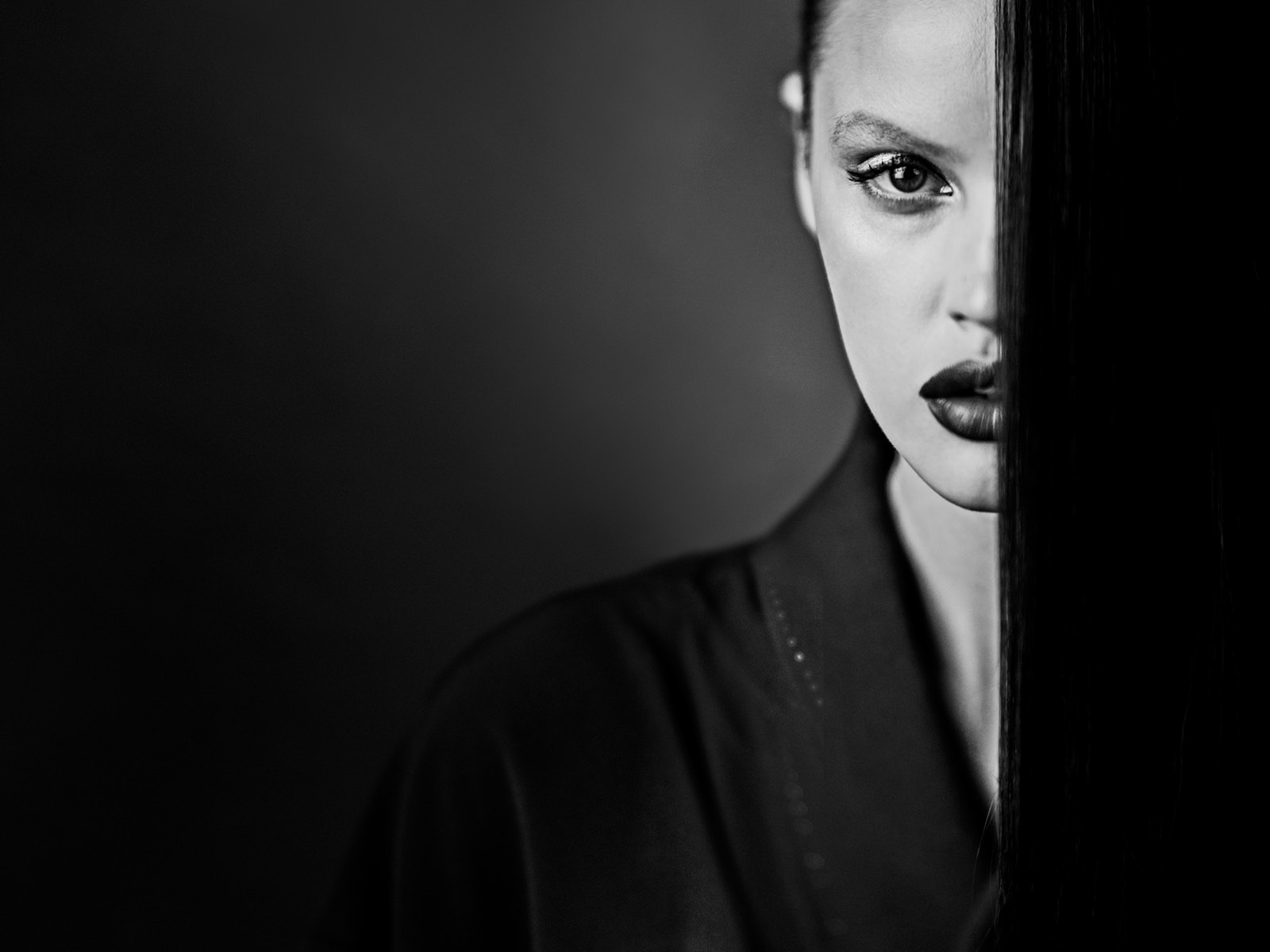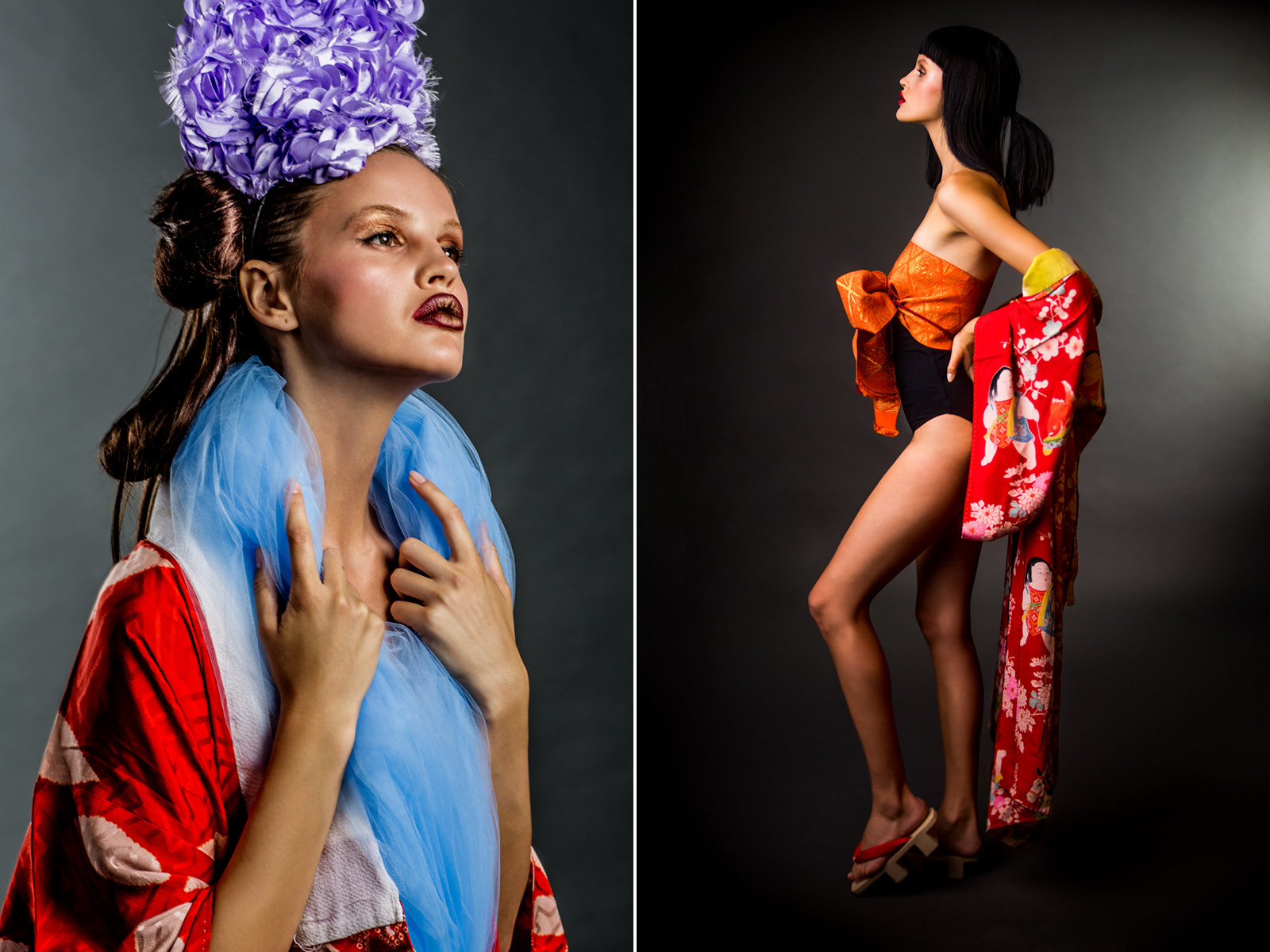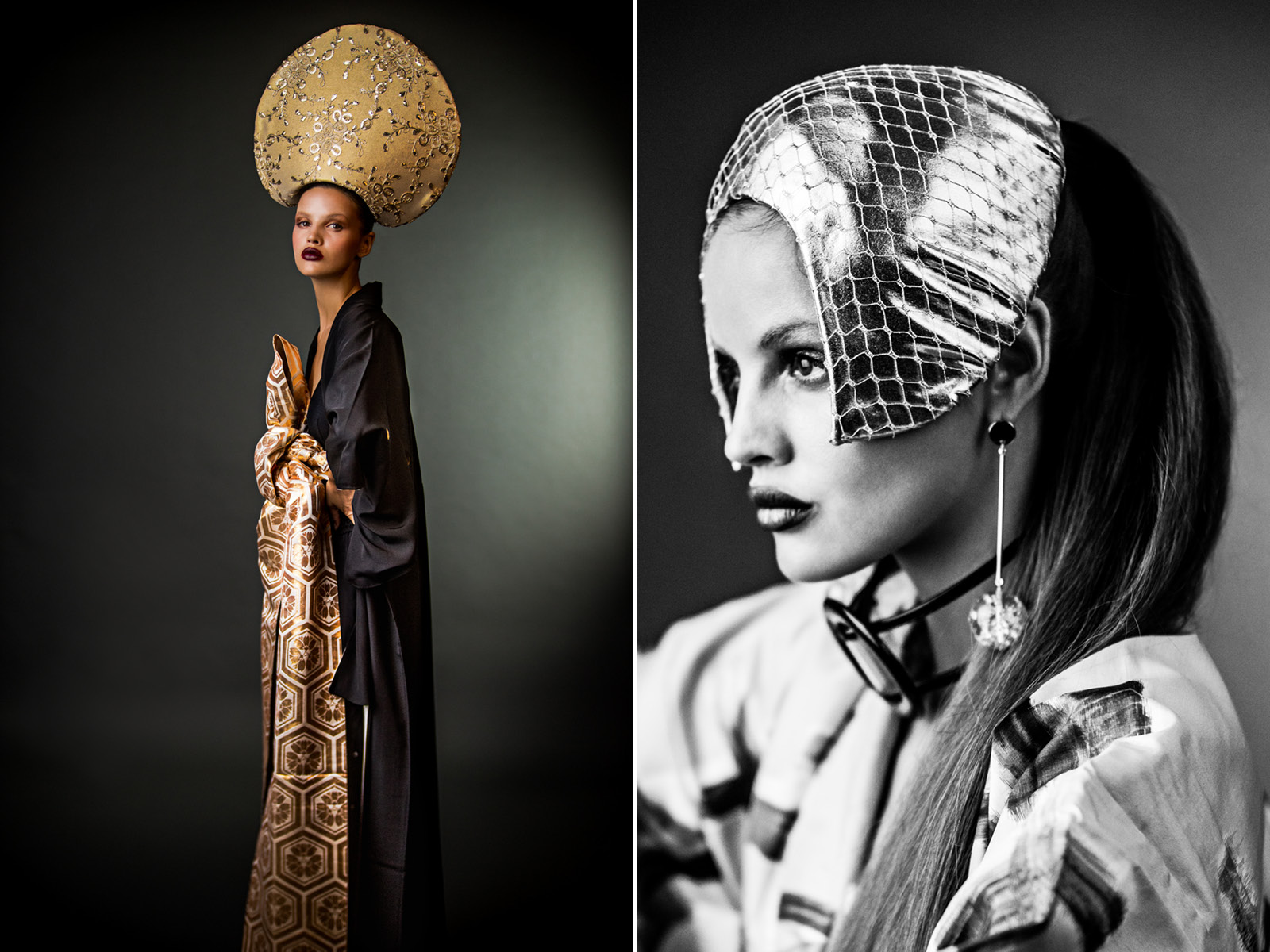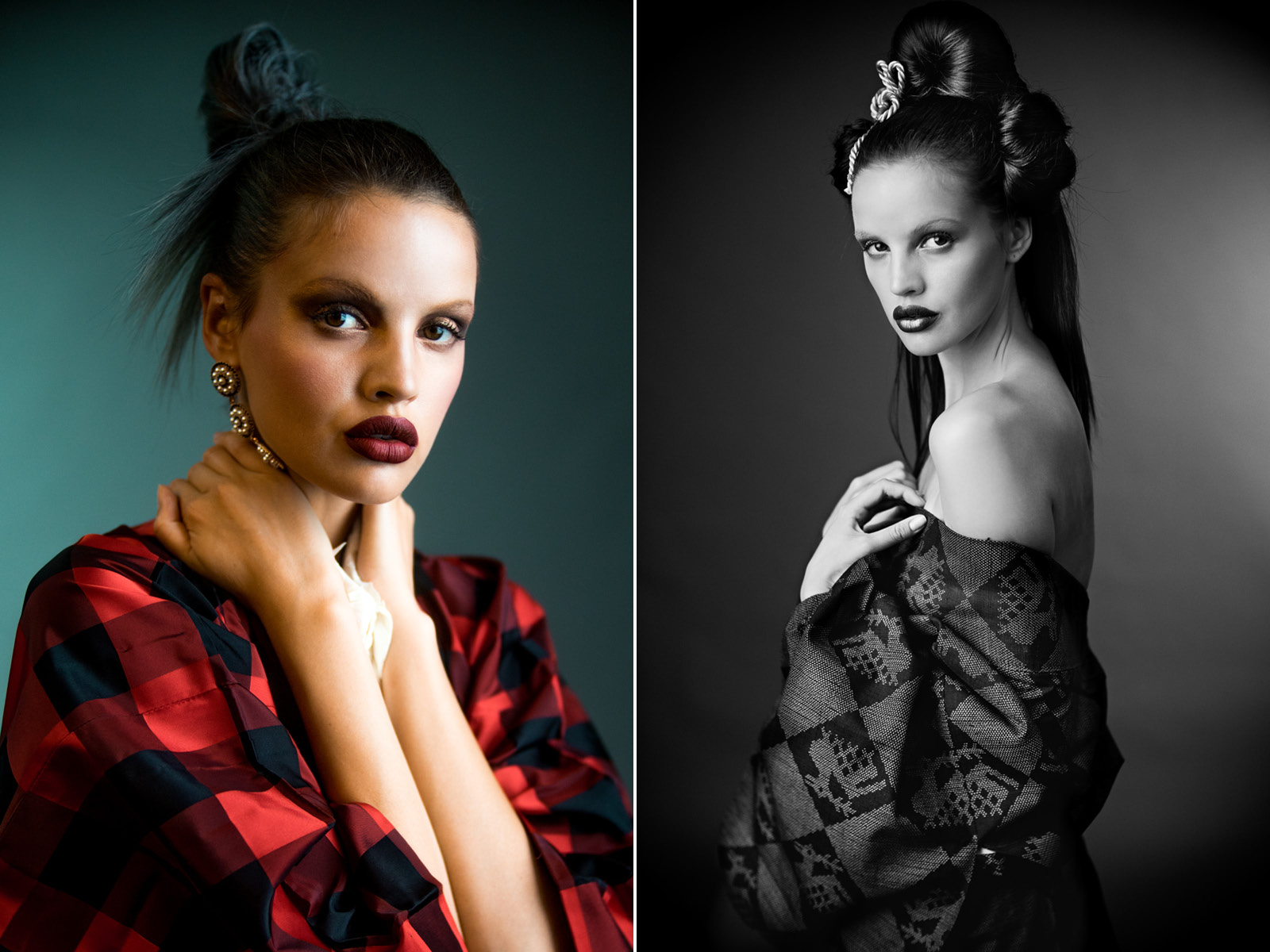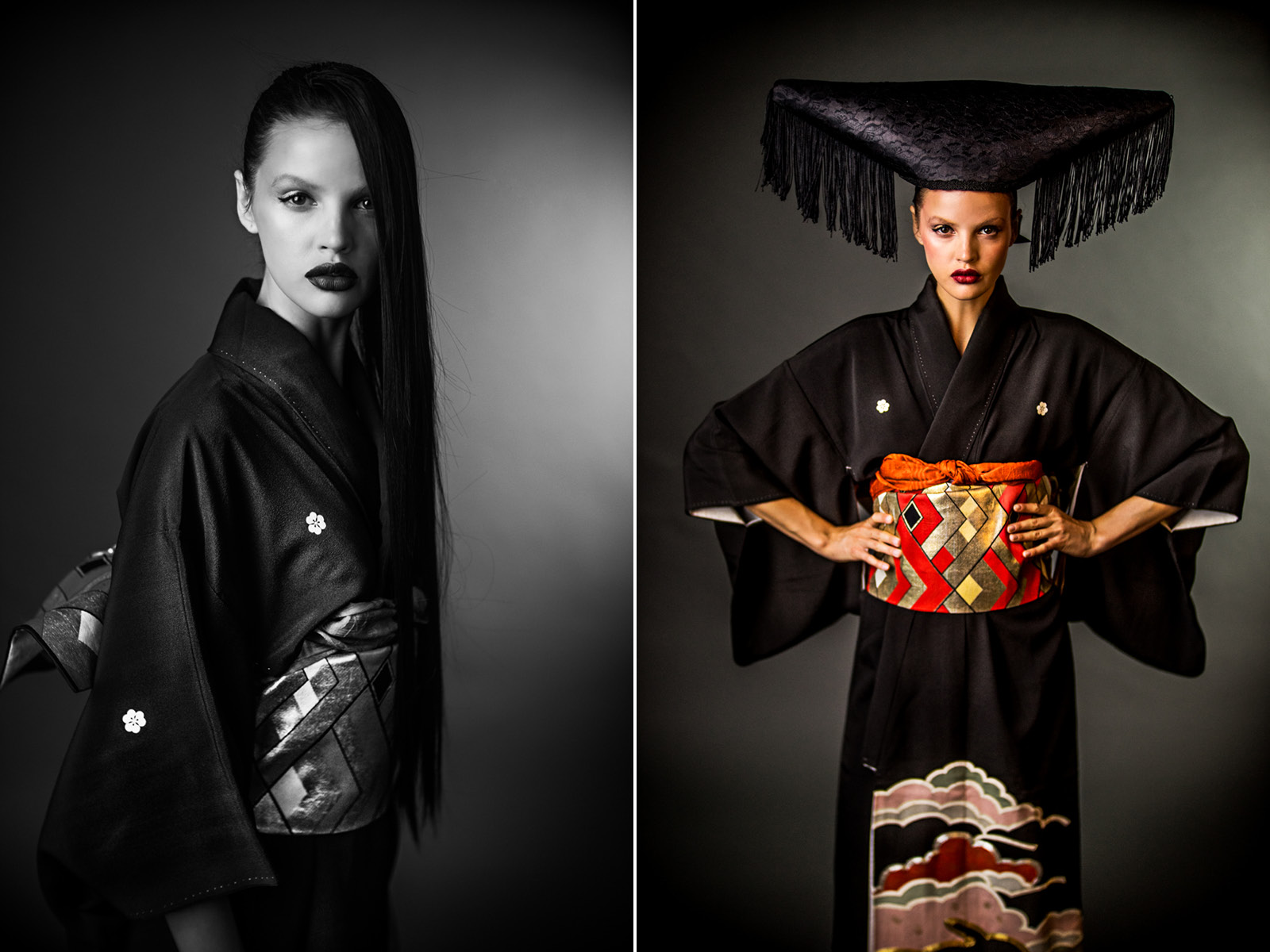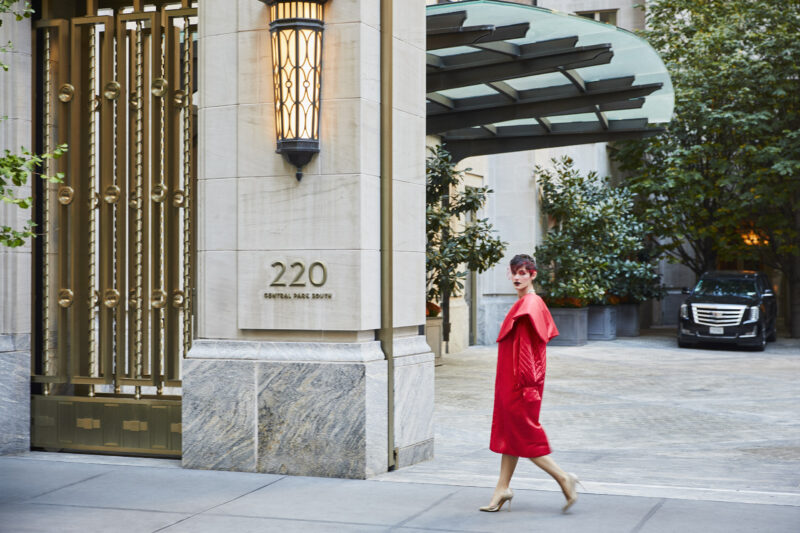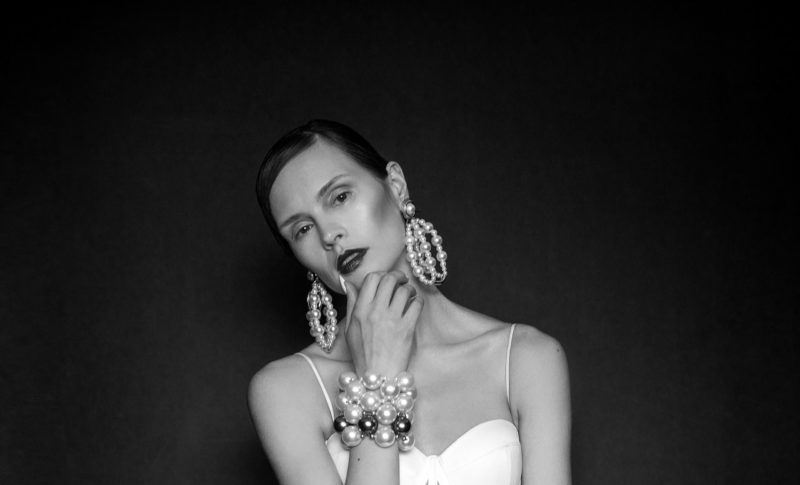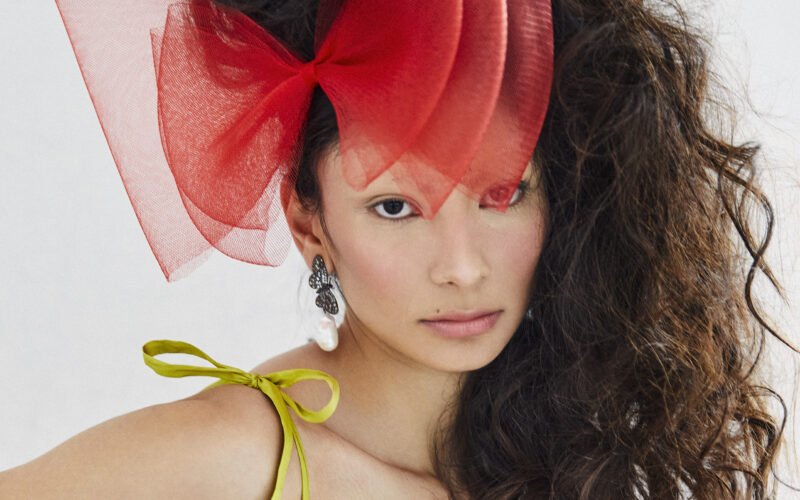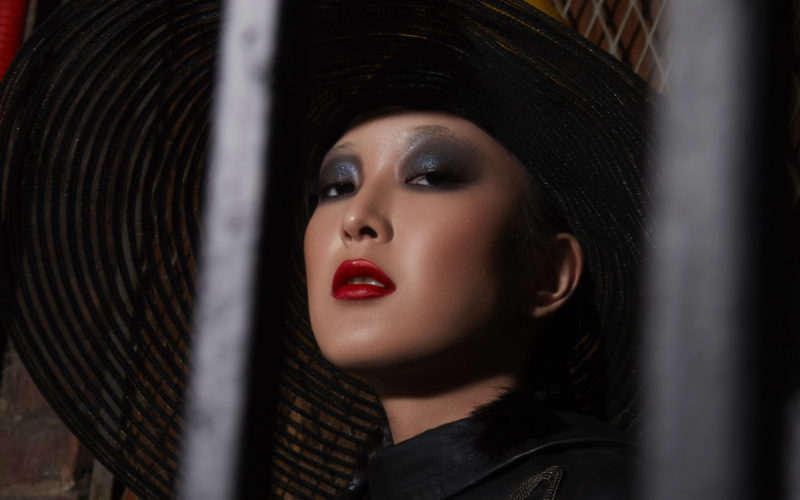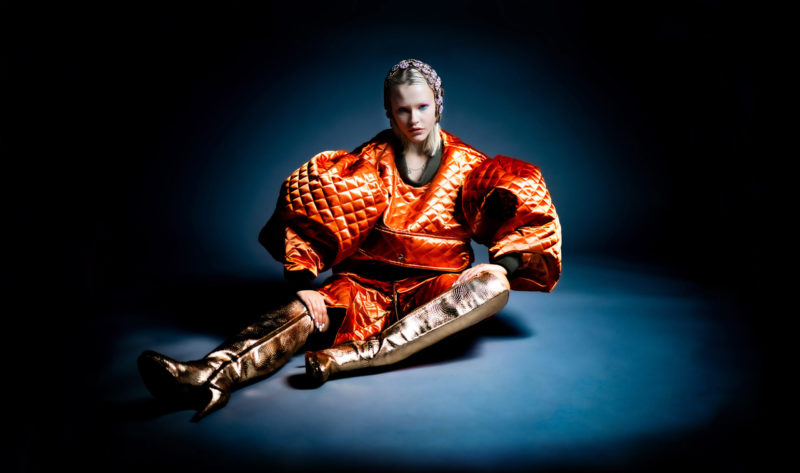photography by KAH POON
styling by YACHI GAULT
hair by JENNIFER MACDOUGAL
makeup by EMI KOIZUMI
production by JILLIAN KORKOSZ
model BIANCA MIHOC with SUPREME MANAGEMENT
article by JIANNA BALASCIO, JULIA WOOD, & JILLIAN KORKOSZ
all wardrobe stylist own YACHI GAULT
Pure obsession in the eyes of model Bianca Mihoc. She is captured off-center by Kah Poon.
Since the nineteenth century, Japanese culture has become an influential sensation for the Western World. A spark of interest was ignited in Eastern Europe that spread westward to the Americas and has not gone out. Japonisme is an artform, indicative of making the unfamiliar and exotic culture familiar in a western setting. Kah Poon captures the imitative aspects of Japanese cultural influence through an intriguing and inquisitive lens in this photo series.
Bianca Mihoc’s contrasting red, blue, and purple accents simultaneously stand out and blend in. An earth-toned look created by artist Emi Koizumi and a peaceful, knowing expression work to assimilate fragments of two cultures into one seamless style.
The Eastern influence on the Western world began long before Japonisme was recognized in French culture. The Silk Road is often recognized as the primary connection between the two halves of the world during ancient times. When the East met the West, ideas of culture, fashion, and beliefs were exchanged between the elites, healing the global divide. The notion of a universal culture exchange generated a deep interest within modern academia of both the East and the West. Japan was a fascinating Eastern terminus due to its isolated location. The deprivation of Western influence and preservation of Eastern culture allowed for the development of entirely unique styles, stunning artwork, and technological advancements.
Currently, European and Asian interests have partners to develop the Silk Road Fashion Project. Researchers are excavating ancient burial sites and examining the textiles found within graves. The primary goal of the Project is to investigate a series of questions that provide insight on communication through textiles and design during the 1st millenium BC. This is an opportunity to explore the roots of Japonisme and why it has revolutionized various forms of culture in the Western part of the world.
Amongst the most recognizable and traditional Japanese garments, the kimono, which directly translates to clothing, was the typical dress for both men and women until the mid-nineteenth century. Mihoc is accessorized with shoes inspired by the traditional Japanese sandal, pokkuri geta. Her composure is that of regality, much like the standard for ancient Japanese women.
Captivating Japanese headpiece designs by @jrmalpere. Traditionally, Japanese women have worn kanzashi, hair ornaments worn in complex hairstyles.
Parisians began to see an influx of new Eastern culture in the late 19th century. The World’s Fair of 1867 brought Oriental bric-à-brac—including fans, kimonos, lacquers, bronzes, and silks West. Fascination with the designs and materials brought in, inspiration to create led to experimentation in printmaking techniques, woodcuts, exaggerated colors and contours, and facial expressions washed over Paris. The term for the obsession that became of Western Europe over Japanese art and design was coined Japonism, or Japonisme.
The exoticism of cheerful design was attractive to France and spread rampantly until it was no longer out of the ordinary to see colorful, detailed outfits and paintings throughout Western Europe.
Japonisme is still so widely appreciated in France that it has opened the Maison de la Culture du Japon to celebrate the Eastern influences. French President, Emmanuel Macron has supported the organization of “Japonisme 2018” in France, as this year marks both the 160th anniversary of diplomatic relations between France and Japan, and the 150th anniversary since the onset of the Meiji era. Exhibitions will appear in Paris, as well as other locations throughout France. Over fifty events will occur from July of 2018 until February of 2019. Each project showcases Japonisme in various aspects including, fashion and design, art, digital media, gastronomy, contemporary theatre, and even martial arts. According to the event’s own publication, “Japonisme 2018” will highlight the sensitivity existing between the French, whose history, arts, culture and philosophy are preeminent in the world, and the Japanese who have maintained for centuries a culture emphasizing the aesthetic of harmony and respect for nature.”
The event itself is what we can call a “resonance of souls.” The 21st century provides challenges for different parts of the world. This event is an opportunity to present a new, positive and collaborative phase for international communities.
A classic red and black contrast creates a high-definition look that is hard to look away from. A timeless, Japanese-inspired top knot is reflective of Japanese mythology and a long history of warriors. Like a warrior, Mihoc holds a fierce yet inviting glare at the camera.
Japonisme emerged onto the high-fashion platform during the 1970’s and 1980’s. Designers including Issey Miyake, Rei Kawakubo, and Yohji Yamamoto introduced their Eastern design properties to Paris. Japonisme in fashion was so well received, that by the Spring of 2017 runways saw Valentino, Loewe, and For Restless Sleepers each incorporating the refined Eastern flare.
The desire for Japonisme has been sustained primarily through artist outlets. The Metropolitan Museum of Art located in the cultural hub of New York City announced a Comme des Garçons retrospective, emphasizing the alluring work of Rei Kawakubo during the 1970’s. Her designs are recognized for their challenges toward conventional runway looks. Kawakubo has been an acclaimed contributor of Japonisme with her profound involvement with Comme des Garçons. Following this, Spring Ready-to Wear 2017 was overflowing with similar influences.
The trend has continued to cross borders and enter into North American territory. As previously mentioned, one of the world’s most renowned museums, The Metropolitan Museum of Art, has recognized Japanese culture within its own. Other world famous art museums continue to curate Japanese art. The sustained growth of cultural communication between Japan and the rest of the world provides a perfect environment for this sensational trend to flourish.
Kah Poon has captured model Bianca Mihoc embodying classic Japanese style with an edge of ferocity. The styling by Yachi Gault pulls inspiration from traditional Japanese pieces. We see a modern twist on both a kimono and obi worn around Mihoc’s waist.
Japonisme brought new perspective to artists, most notably, Vincent Van Gogh. Van Gogh was inspired by his own collection of Eastern art, and is quoted “all of my art is inspired to some extent by Japanese art”. The collection, which introduced him to art featuring childlike, exotic subjects, attention to detail in nature, and pops of colors brought him joy, and in turn, he created works that were arranged in ways that were new and exciting to his side of the continent, making his artwork an important catalyst in the movement.
“And we wouldn’t be able to study Japanese art, it seems to me, without becoming much happier and more cheerful, and it makes us return to nature, despite our education and our work in a world of convention.”
–Vincent Van Gogh on Japanese art, September 1888.
Keeping Japanese style, art, and culture on the radar is in essence a way to keep up with the past, present, and future. As noted by Van Gogh, it is a return to our nature, which is happy and cheerful.

